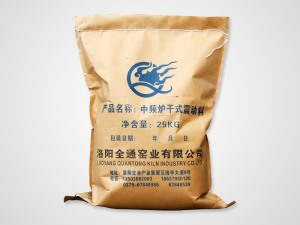What are the effects of melting temperature on the composition of intermediate frequency furnace lining materials?
If the molten metal temperature is too high, the corrosion of the slag on the furnace lining will be aggravated; the fluidity of the molten metal will increase to penetrate and penetrate the cracks, which will aggravate the chemical corrosion of the molten metal to the furnace lining. High temperature tapping and low temperature casting have always been the principles of operation .But each casting has its melting process requirements. When reaching a suitable temperature, do not seek excessive temperature, but often investigate and measure the temperature.
While controlling the smelting temperature as high as possible, there should be no long-term high temperature or heat preservation waiting for casting. Excessive temperature will not only easily burn the alloy, but also damage the furnace wall. At the same time, the energy consumption will also increase the influence of smelting raw materials: The furnace lining has just been laid, and the furnace wall has not been completely sintered. The first few furnaces should use relatively clean metal materials, try to prevent materials with complex components, rust, and more oil pollution, especially oil-impregnated scrap iron filings. Low melting point, flow Raw materials with good properties will aggravate the penetration of the furnace wall; raw materials with high melting point require higher temperatures.
All of these will damage the life of the furnace lining, so it is more appropriate to arrange smelting in the middle and later stages. In addition, when smelting different raw materials, attention should be paid to the properties of the metal materials. Furnace wall corrosion. The composition is complex, containing a lot of rust, oil, and uncleaned waste. The oxides formed by the returned charge at high temperature and high oxygen have complex interpenetration and mutual dissolution, which is easy to form sticky slag and corrode the furnace wall. , the furnace wall will be loose and melted. The impurities brought in not only increase the energy consumption, but also affect the quality of the castings.

Related News
- Introduction of construction method of ramming material in intermediate frequency furnace
- How to choose the material of furnace lining
- The difference between rammer and castable
- Application direction of intermediate frequency furnace refining
- Introduction to the construction method of dry ramming material
- Do you know the production process and control points of breathable bricks?
- The application of argon blowing technology at the bottom of the intermediate frequency furnace
- Method for prolonging service life of intermediate frequency furnace lining
- In addition to diffused breathable bricks, there are those types of breathable bricks
- What are the advantages of coil cement
- The intermediate frequency furnace ramming material itself protects the furnace and the coil
- About the sintering problem of intermediate frequency furnace lining materials
- Basic introduction to coil cement
- Proper operation plan for the use of ramming mass on the bottom of an electric furnace
- Use the action of ramming material
- Talking about the performance and application of refractory ramming material
- What are the characteristics and advantages of coil cement?
- The conditions required for the selection of intermediate frequency furnace charge
- Precautions for the construction of coil cement
- What are the functional advantages of coil cement?


